Paralysis can be a life-altering experience, both for the individual experiencing it and for their loved ones who find themselves in the position of caregivers. Whether the paralysis is temporary or permanent, it’s essential to provide optimal care to ensure the individual’s comfort, health, and dignity.
This article will guide you on how to effectively care for a paralyzed person at home, offering practical tips and a wealth of insights to help you navigate this challenging journey.
Keep in mind that there are also other avenues of care that can enhance the comfort and quality of life of your loved one, including considering certain specialized services like Hospice.
Understanding Paralysis
Paralysis is the loss of muscle function in a part of the body. This loss can be partial or complete, and the affected area might be localized or widespread. The most common causes are stroke, spinal cord injury, and certain neurological diseases like multiple sclerosis.
Creating a Safe Environment
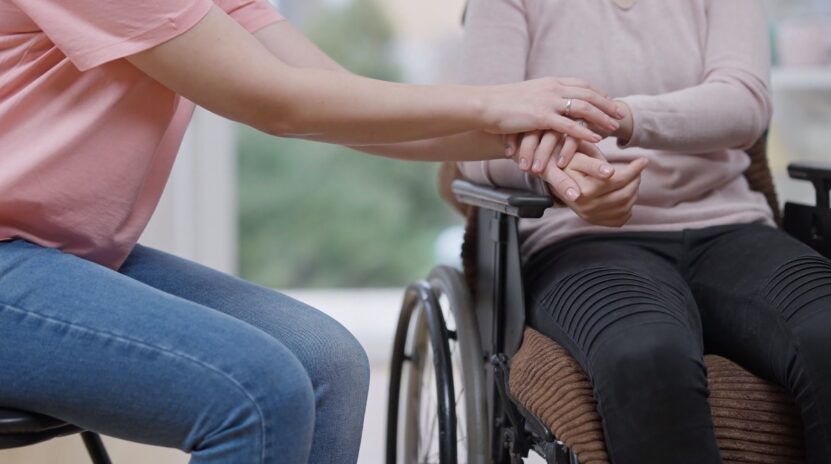
Ensuring the home is safe and accessible is the first step in caring for a paralyzed individual.
1. Home Modifications:
- Install ramps or lifts where there are steps or stairs.
- Widen doorways for wheelchair access.
- Adjust the height of countertops, tables, and beds if necessary.
- Make sure there is plenty of space for maneuvering a wheelchair or other mobility aids.
- Install grab bars in the bathroom, especially near the toilet and in the shower area.
2. Fall Prevention:
- Remove loose rugs and clutter that could cause trips and falls.
- Install non-slip mats in the bathroom and other slippery areas.
- Make sure all areas of the house are well-lit to prevent accidents.
Providing Daily Care
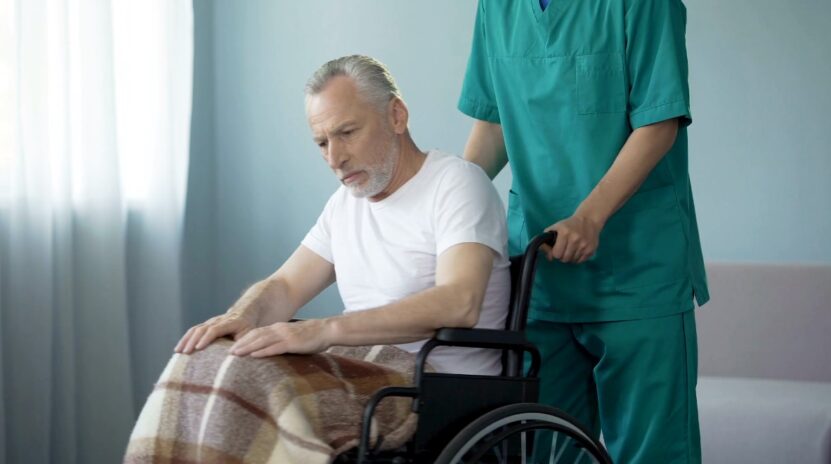
Paralyzed individuals may require assistance with various activities of daily living, including personal hygiene, feeding, and mobility.
1. Personal Hygiene:
- Bathing: Use a shower chair or bed bath system. Always check the water temperature before bathing the individual to prevent burns.
- Oral Care: Brush their teeth twice a day. If the individual cannot spit, use a suction machine to remove saliva and toothpaste.
- Toileting: Use adult diapers, a bedside commode, or a catheter depending on the individual’s condition and doctor’s advice.
2. Feeding:
- Position the individual upright during meals to prevent choking.
- If they have difficulty swallowing, consult a speech therapist or dietitian for advice on safe swallowing techniques and appropriate food textures.
- Always have a plan for choking emergencies, such as knowing how to perform the Heimlich maneuver.
3. Mobility:
- Turning and Repositioning: To prevent bedsores, turn and reposition the individual every two hours if they are bedridden.
- Transfers: Use a mechanical lift or learn proper transfer techniques to move the individual from the bed to the wheelchair or the toilet.
Addressing Medical Needs
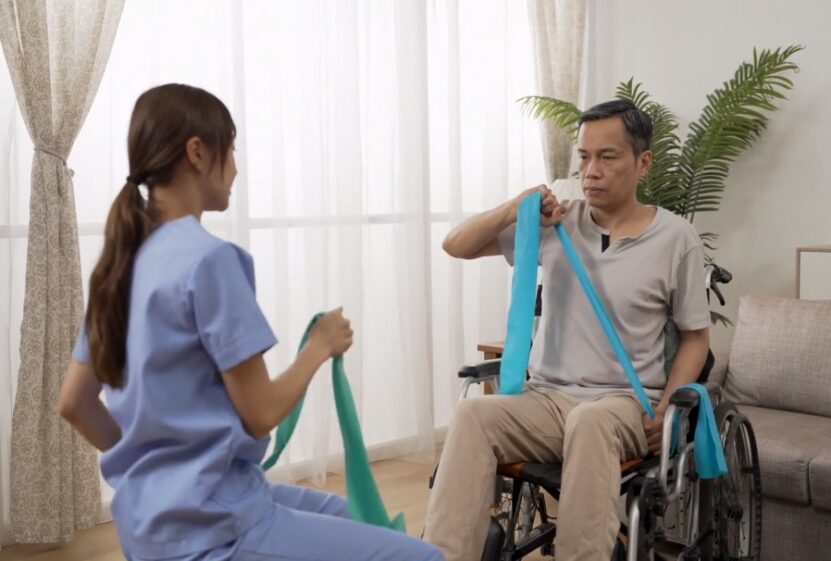
1. Medication Management:
- Maintain a schedule for medications and ensure they’re taken as prescribed.
- Monitor for side effects and report any concerns to the healthcare provider.
2. Wound Care:
- Check the skin daily for pressure sores, especially in bony areas.
- Clean any wounds immediately and consult a healthcare provider if there are signs of infection.
3. Physical Therapy:
- Work with a physical therapist to create an exercise regimen to maintain muscle tone and improve circulation.
- Remember, never push the individual beyond their comfort level during these sessions.
Supporting Emotional Well-being

Caring for the emotional well-being of a paralyzed individual is as important as tending to their physical needs.
- Encourage them to express their feelings and listen empathetically.
- Involve them in decision-making processes about their care.
- Help them stay connected with their friends, family, and social networks.
- Consult a mental health professional if they show signs of depression or anxiety.
Care for the Caregiver
As a caregiver, it’s equally important that you take care of your own physical and emotional well-being.
1. Self-Care:
- Make sure to get adequate rest and nutrition.
- Take breaks when needed and don’t neglect your hobbies and interests.
- Keep up with your own medical appointments and health screenings.
2. Emotional Well-being:
- It’s normal to feel overwhelmed. Reach out to friends, family, or a mental health professional if you’re feeling stressed or anxious.
- Joining a support group can be very beneficial. Sharing your experiences and hearing from others in similar situations can provide comfort and practical advice.
3. Seek Help When Needed:
- Don’t hesitate to ask for help. Consider using respite care services when you need a break.
- If the care becomes too demanding, professional home health care services or long-term care facilities are options to consider.
Advocating for the Paralyzed Individual
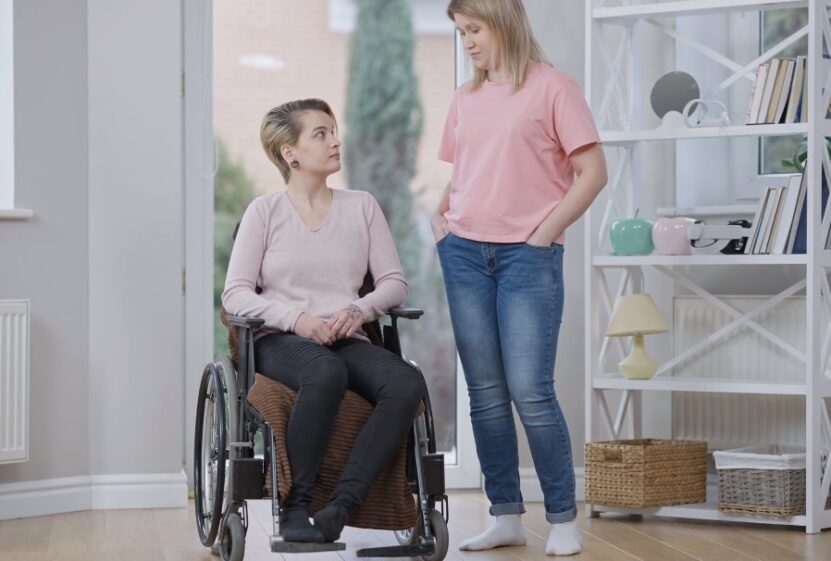
As a caregiver, you also play a crucial role in advocating for the paralyzed individual’s rights and needs.
- Stay informed about the latest treatments and therapies that could benefit the individual.
- If they are unable to communicate, be their voice in medical decisions.
- Advocate for their rights in social and community settings to ensure they have access to the same opportunities as others.
Utilizing Assistive Technologies
Living with paralysis does not mean living without independence. A range of assistive technologies can help improve the quality of life for those living with paralysis.
1. Mobility Aids:
Wheelchairs, either manual or electric, are the most commonly used mobility aids. They can be customized to meet the individual’s specific needs, including height, weight, and type of paralysis. Other aids include transfer boards, lifts, and standing frames, which help individuals change positions and maintain muscle strength.
2. Communication Aids:
For those with paralysis affecting speech or upper body movement, there are a variety of communication aids available. This includes voice amplifiers, text-to-speech apps, and eye-tracking technology that allows individuals to use computers using only their eye movements.
3. Home Automation:
Smart home technologies can provide a significant boost to independence. Voice-activated systems can control lights, locks, thermostats, and more. Other devices can help with tasks like opening doors or answering the phone.
Implementing a Healthy Lifestyle
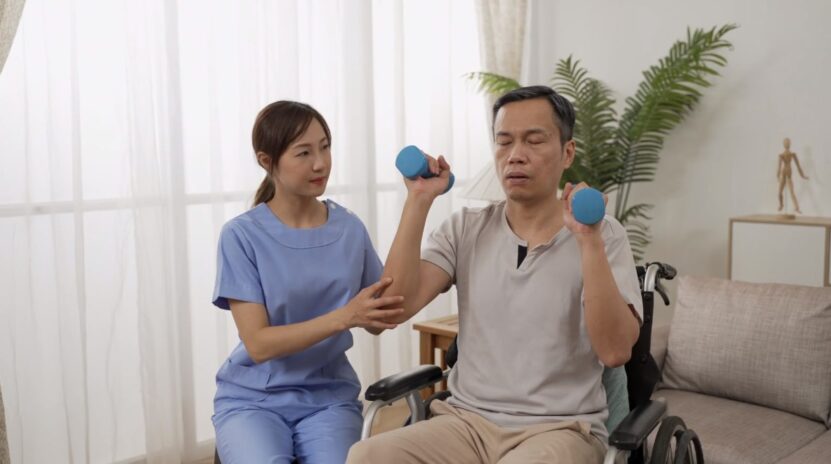
Adopting a healthy lifestyle can significantly impact the overall well-being of a paralyzed individual.
1. Diet and Nutrition:
A balanced diet is crucial for maintaining overall health, managing weight, and preventing constipation, a common issue for individuals with paralysis. Consulting a dietitian can help create a meal plan that meets their specific needs.
2. Exercise:
While paralysis affects muscle movement, it’s still possible and beneficial to engage in exercise. Depending on the type and extent of paralysis, this may include assisted stretching, passive exercises, or even specialized workouts with the help of a physical therapist.
3. Mental Health:
Regular mindfulness or meditation practices can help manage stress and promote mental well-being. Mind-body practices like guided imagery or deep breathing exercises can also be beneficial.
Understanding the Role of Rehabilitation
Rehabilitation plays a vital role in maximizing function and improving quality of life after paralysis.
1. Physical Therapy:
A physical therapist can devise a personalized exercise plan to maintain or improve physical strength, flexibility, and overall health. They can also teach caregivers how to assist with these exercises at home.
2. Occupational Therapy:
Occupational therapists help individuals with paralysis learn new ways to conduct daily tasks, such as eating, dressing, and bathing. They also provide advice on home modifications and assistive devices.
3. Speech and Language Therapy:
If paralysis has affected the individual’s ability to speak or swallow, a speech and language therapist can provide exercises and strategies to improve these functions.
Legal and Financial Planning

Legal and financial planning can help ensure that the paralyzed individual’s care and rights are protected now and in the future.
1. Insurance:
Understand the insurance policy details, including what is covered and what is not. It’s also crucial to be aware of any pre-authorizations required for services or equipment.
2. Legal Documents:
Ensure all necessary legal documents are in place, including a will, power of attorney, and a living will or healthcare proxy.
3. Financial Planning:
Consider consulting a financial advisor to understand the cost of long-term care and how to best manage finances. They can also provide information on any financial aid or programs the individual may be eligible for.
Closing Thoughts
Caring for a paralyzed person at home can be a complex and demanding task, but with the right knowledge and support, it can also be a deeply rewarding experience. Remember, every individual’s needs and abilities are unique, so flexibility and patience are key.
Always consult healthcare professionals for personalized advice and use the many resources available to you. You’re not alone on this journey, and there’s a wealth of support out there to help you provide the best care possible.
While the road may be challenging, the strength, resilience, and deep bonds forged through shared experiences often lead to profound personal growth and a greater appreciation of life’s precious moments.

